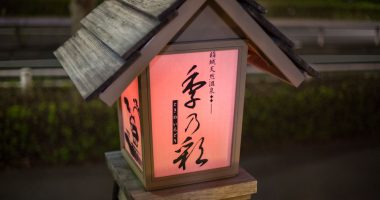Japan drives on the left like the UK, New Zealand, and a handful of other countries. Almost 99% of all cars sold are automatics and approximately 35% are “keisha”—smaller, highly fuel efficient vehicles that are more suited to the narrow backstreets of the cities. The general speed limit in Japan is 60 kmph (37 mph). Highway speed limits are usually 100 kmph and in urban areas 40 kmph is typical. Generally speaking, driving in Japan is safe (or at least accident rates are comparable with other European countries like UK and Holland). The roads are extremely well maintained, and signs follow international standards and are in both Japanese and English. With the exception of the Shuto Expressway in Tokyo, which can be confusing even for Japanese living in the capital, road signs are easy to follow and all hire cars will come fitted with GPS systems. North American drivers should remember that they are not allowed to turn left at a red light, and everyone should note that Japan has one of the the most stringent laws against drink-driving rules in the world.
Can I drive in Japan?
Visitors from a country which issues driver licenses in accordance with the 1949 Geneva Convention can drive in Japan on an International Driver’s License (a list of these countries can be found here). The International Driver’s License can only be applied for in your home country and is valid for one year from the date you enter Japan. It cannot be renewed so those staying in Japan more than one year will need to convert their license to a Japanese one.
Agreements have been made with Switzerland, Germany, France, Belgium, Slovenia, Monaco, and Taiwan to allow their citizens to drive in Japan so long as they have an official Japanese translation of their domestic licence (this translation is valid for one year from the date of entry into Japan). Translations need to be done by the local Japanese embassy or the Japan Automobile Federation (JAF), branches of which can be found here.
Motorways / Highways
Japan has a fairly extensive network of highways that cut through the mountainous regions of Japan and link the major cities. These roads are toll roads and they are not cheap. Taking the highway from Tokyo to Kyoto (about 450 kilometers) would cost you approximately ¥11,000 ($75) in tolls charges, which is about the same as the price of a standard-class seat on the bullet train. Most highways are four-lanes with a speed limit of 100 kmph (different limits apply for the Shuto Expressway).
Parking
Space is at a premium in the cities, especially Tokyo. Those living in apartment blocks in central Tokyo could be paying up to ¥30,000 ($204) per month for a space in the underground car park.

Although you do get multi-level car parks next to shopping complexes, more common are small concrete areas squeezed in between shops which can fit 6-10 cars and charge ¥100 ($0.68) per 20 minutes. While motorcyclists will casually mount the pavement and park their vehicles like a pushbike, motorists would be severely punished for leaving their car parked on the side of a road (most likely it would be towed).





